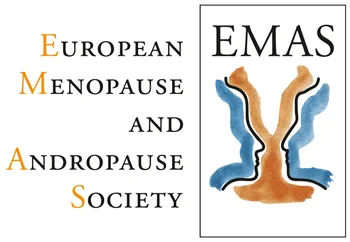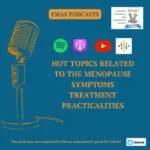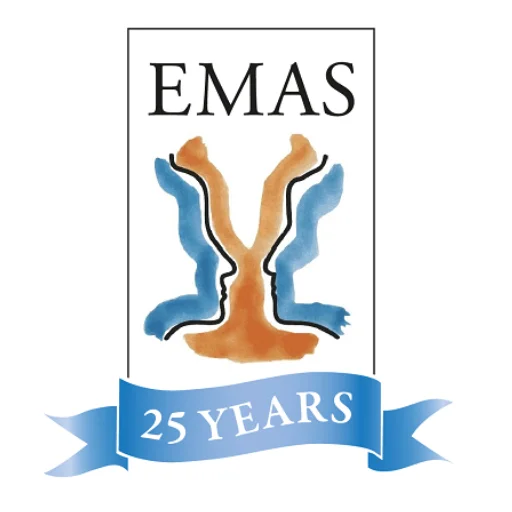Host: Welcome to today’s podcast Abnormal uterine bleeding in perimenopause – How to manage it?. This episode is part of a podcast series supported by Abbott. The content is solely the responsibility of EMAS, the European Menopause and Andropause Society. All our episodes are available in English, Spanish, Mandarin, and Russian and you can find them on any of the most popular podcast platforms.
In today’s episode Prof. Natalia Pedachenko, Head of Obstetrics, Gynecology and Perinatology Department at Shupyk National Healthcare University of Ukraine; Gynecologist at Kiyv Maternity Hospital #1 and Executive Secretary of the Ukrainian Society of Gynecologists Endocrinologists will help us understand how to manage abnormal uterine bleeding in perimenopausal women.
Prof. Natalia Pedachenko: Greetings, dear colleagues, and thank you for your kind attention. At the beginning. I would like to note that for all women with abnormal uterine bleeding, we should apply the classification of possible causes of these bleedings developed by Figo in 2018, which uses a very clear and easy mnemonic palm coin. Next, I would like to divide the women with abnormal uterine bleeding in the perimenopausal age into two, let’s say, conditional groups. Those who do not use hormonal drugs and those who are on menopausal hormonal therapy.
Let’s begin with the first. Women at the age of 45, 47, often have heavy menstrual bleedings, which are associated with ovulation disturbances or anovulation or organic pathology, which significantly impair the quality of life. Hormonal preparations are widely used in the treatment of abnormal uterine bleeding, in particular combined oral contraceptives, COCs, and levonorgestrel intrauterine device (52 milligrams). COCs can be used in women who do not want to use an intrauterine device or have contraindications to its application.
The combination of estradiol valerate and dienogest in a dynamic dosage regimen is the only combined oral contraceptive which has approved indication for the treatment of abnormal uterine bleeding. So, this combination may be the drug of choice in women with abnormal uterine bleeding. The dynamic dosing regimen of COCs with estradiol valerate is associated with relatively stable estrogen levels throughout the cycle, which allows for a positive effect on vasomotor symptoms and mood lability, provides a woman’s body with natural estrogen, characterized by minimal effect, metabolic and hemostatic parameters.
In addition, this combination may have an advantage in women with sexual desire dysfunction, including those when taking other combined oral contraceptives. Levonorgestrel intrauterine device (52 milligrams) is recommended by many clinical guidelines in different countries of the world as the first-line therapy of abnormal uterine bleeding as it is the most effective treatment method compared to other medical options. Levonorgestrel intrauterine device, (52 milligrams), reduces the volume of menstrual blood loss by 97%. Helps to increase the level of hemoglobin and ferritin, thereby improving the quality of life in women with abnormal uterine bleeding.
Today, there are studies that confirm the effectiveness of its use in women with abnormal uterine bleeding caused by adenomyosis and uterine myoma. Recently, data on its positive effect in the prevention of recurrence of endometrial polyps after polypectomy in women with abnormal uterine bleeding also appeared. So, in perimenopausal, women with abnormal uterine bleedings who find it difficult to adhere to a daily pill regimen and who have extragenital pathology, for example, cardiovascular disease, obesity, diabetes, Levonorgestrel intrauterine device should be preferred since its use does not require daily monitoring by patient and the systemic effect is minimal. The endometrial blood plasma concentration gradient of levonorgestrel is more than 1000-fold.
Let me continue with another group of premenopausal women who have unscheduled abnormal uterine bleeding taking menopausal hormonal therapy, MHT. Tactics of diagnosis and treatment should first of all, rule out endometrial cancer, and then find out the cause of acyclic bleeding for possible pathogenetic or symptomatic therapy. Let’s continue, the management and it will depend on the type of MHT. With continuous combined MHT, bleeding during the first six months is generally acceptable if no other risk factors are present, but if any risk factors or bleeding after amenorrhea or menstrual bleeding more than two cycles occur, transvaginal ultrasound should be performed. Thickness of endometrium of more than 5 millimeters on continuous combined MHT should be further investigated with pipelle biopsy or hysteroscopy-guided biopsy.
In perimenopausal women cyclic MHT is the best option of course. If cyclic combined MHT is given, ideally check the endometrial thickness by transvaginal ultrasound within a week of the last progestogen tablet. If it is more than 7 millimeters on cyclic combined MHT, you should proceed with pipelle biopsy or hysteroscopy. Well, now about the treatment of unscheduled bleeding during menopause hormonal therapy. It also depends on the regimen.
Cyclic MHT: prolonged heavy bleeding after withdrawal, we have to increase the dose or change the progestogen type. Another option is to decrease estrogen. Bleeding occurs at the beginning of the gestogen phase. We can increase the dose or duration of progestogen and also another option is to change the type of progestogen. If the bleeding starts before the withdrawal period, we can increase the dose of estrogen. If the bleeding is irregular, we can change the regimen or increase the dose of progestogen. If painful bleeding takes place, we can change the progestogen type. An oral progestogen can be also added for combined MHT regimens containing progestogens in a combined product, or if a woman wears a levonorgestrel intrauterine device.
If we are talking about continuous combined menopausal hormonal therapy, the first option is to lower the estrogen dose if unscheduled bleeding occurs. If it is not enough for vasomotor symptom relief, there are two possible options. If a woman is younger than 52 and endometrial thickness is 4/8 millimeters, we can switch to cyclic MHT with regular withdrawal bleedings. But if a woman is older than 51 and endometrial thickness is not in this window, we can increase or change the type of progestogen.
Thank you for your kind attention.
Host: Today, Professor Natalia Pedachenko discussed abnormal uterine bleeding in perimenopausal women and its management depending on taking or not menopausal hormonal therapy. Thank you for listening to today’s episode. We hope it will be valuable for your clinical and research practice. Stay safe.
[END]


